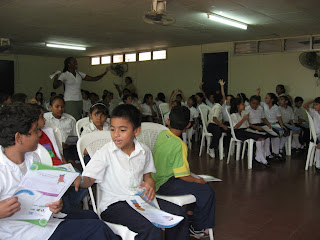Long Time F2F Volunteers Make Local Paper in River Falls, Wisconsin

Jerry Nolte & Tony Jilek are veteran F2F volunteers who have worked in Nicaragua for the past few decades, building upon the work and relationships they have developed in the country. Both are retired University of Wisconsin-River Falls (UWRF) Agriculture professors. Jilek taught at UWRF in the College of Agriculture, Food and Environmental Science (CAFES) for 26 years and Nolte taught for 30. In addition to their continuous support to the Farmer to Farmer program, both Jilek and Nolte are active members of the Partners of the Americas' Wisconsin/ Nicaragua Chapter. Yesterday, December 18th, the River Falls Journal in Wisconsin wrote an article about their Farmer to Farmer trips and work with Nicaragua/Wisconsin Chapter. Please check it out: http://www.riverfallsjournal.com/event/article/id/103746/ Nolte & Jilek in the field during their 2011 FTF trip










+007.JPG)







